Come Christmas 1888, it was generally considered that the Whitechapel murders were finally at an end. Life and the daily struggle continued and the women who sold their bodies day in, day out in order to survive exist gradually stopped soliciting in packs as the need for security lessened.
On 26th January 1889, James Monro told the Home Office that the amount of police on the streets of Whitechapel was to be reduced.
Of course, there was still no conviction but the gossip of the time spoke of the murderer killing himself due to realising the insanity of his actions in Millers Court. After all, what else was there for him to do? If his deeds escalated in their fury or curiosity, they could not be taken any further. It wouldn’t be too far to suggest that either capture or suicide would be the next step. This was all speculation, of course, but as the months rolled on and a relative peace descended there was only one question to be answered and it’s the same one we have today. Just who was ‘Jack the Ripper’?
One senior official, writing in 1910, had a definite opinion on the matter.
“For I may say at once that “undiscovered murders ” are rare in London, and the “Jack-the-Ripper ” crimes are not within that category. And if the Police here had powers such as the French Police possess, the murderer would have been brought to justice. Scotland Yard can boast that not even the subordinate officers of the department will tell tales out of school, and it would ill become me to violate the unwritten rule of the service. So I will only add here that the “Jack-the-Ripper ” letter which is preserved in the Police Museum at New Scotland Yard is the creation of an enterprising London journalist.
Having regard to the interest attaching to this case, I am almost tempted to disclose the identity of the murderer and of the pressman who wrote the letter above referred to. But no public benefit would result from such a course, and the traditions of my old department would suffer. I will merely add that the only person who had ever had a good view of the murderer unhesitatingly identified the suspect the instant he was confronted with him; but he refused to give evidence against him.
In saying that he was a Polish Jew I am merely stating a definitely ascertained fact. And my words are meant to specify race, not religion. For it would outrage all religious sentiment to talk of the religion of a loathsome creature whose utterly unmentionable vices reduced him to a lower level than that of the brute.”
The Lighter Side of My Official Life by Sir Robert Anderson (1910)
Yes, no lesser personage than Sir Robert Anderson.
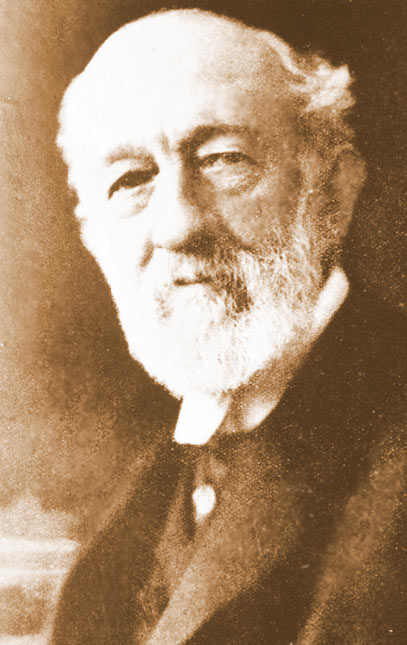
(Sir Robert Anderson)
And there it is. In black and white. The Assistant Commissioner of the CID speaking 22 years after the murders stating once and for all that Scotland Yard got their man. Case closed. We can all go home. Cheers mate.
What’s that? You want further evidence? Okay. Here’s Sir Melville Macnaghten, the Assistant Chief Constable of the CID in 1889. He had replaced Anderson in 1903.
“Although…the Whitechapel murderer, in all probability, put an end to himself soon after the Dorset Street affair in November 1888, certain facts pointing to this conclusion, were not in possession of the police till some years after I became a detective officer.”
The Days of My Years by Melville Macnaghten (1914)
Yep. He’s singing from the same hymn sheet there. It took a while but the CID had the Ripper under lock and key.
All wrapped up then, surely. It’s just a pity that Anderson didn’t name his man.
But there was further intrigue to come.
In 1894, nearly six years after the murders, The Sun newspaper, a rag used to printing scurrilous rumours to this day, claimed that a man called Thomas Cutbush, who had been arrested in 1891 for stabbing women in the backside, was the Ripper. Macnaghten was distinctly displeased at this suggestion and wrote a memorandum to the Home Office, citing that his candidacy as a legitimate suspect was bogus at best. Firstly, it was unlikely that the Ripper, given the depravity of Millers Court, would reduce the violence of his attacks. Going from that level of violent debauchery to simply stabbing soft tissue nearly three years later was dubious to say the least. What’s more, according to Macnaghten (pronounced ‘McNorton’); there were better contenders in the police files.
“No one ever saw the Whitechapel murderer; many homicidal maniacs were suspected, but no shadow of proof could be thrown on any one. I may mention the cases of 3 men, any one of whom would have been more likely than Cutbush to have committed this series of murders:
(1) A Mr M. J. Druitt, said to be a doctor & of good family — who disappeared at the time of the Miller’s Court murder, & whose body (which was said to have been upwards of a month in the water) was found in the Thames on 31st December — or about 7 weeks after that murder. He was sexually insane and from private information I have little doubt but that his own family believed him to have been the murderer.
(2) Kosminski — a Polish Jew — & resident in Whitechapel. This man became insane owing to many years indulgence in solitary vices. He had a great hatred of women, specially of the prostitute class, & had strong homicidal tendencies: he was removed to a lunatic asylum about March 1889. There were many circumstances connected with this man which made him a strong ‘suspect’.
(3) Michael Ostrog, a Russian doctor, and a convict, who was subsequently detained in a lunatic asylum as a homicidal maniac. This man’s antecedents were of the worst possible type, and his whereabouts at the time of the murders could never be ascertained.”
Hang on. What did he say?
“No one ever saw the Whitechapel murderer”
Yes they did!
Robert Anderson talks of not only seeing him, but confronting him with a witness and lengthy discussions about possible court cases. Surely he’d let Macnaghten in on that? Wouldn’t he? It seems a bit harsh not to let the then current Assistant Commissioner in on the arrest of the century and then let him make a fool of himself by discussing, not stating, three better alternatives to Cutbush.
They can’t both be informed.
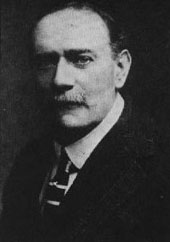
(Sir Melville Macnaghten)
Actually, a closer examination would show that both men were not quite as ‘on the ground’ as you’d suppose. Anderson’s predecessor, James Monro, retired on the final day of August 1888 – the day of the first canonical murder in Bucks Row. Anderson took over but, having not had a holiday for years, was on the brink of exhaustion so planned a well-earned break from 8th September – coincidentally, the date of the second murder in Hanbury Street. He was still away during the ‘double event’ so was only in situ for the fifth and final murder.
Likewise, Macnaghten only joined the investigation from 1889 and, by that time, the search was more or less winding down. As stated earlier, Monro had reduced the number of policemen in E1 and Abberline was already working on other cases by then so Macnaghten can hardly claim to be amongst the cut and thrust of the atrocities. What’s more he wasn’t really a policeman. The Assistant Chief Constable job was his first in the force. His previous employment was overseeing his family’s tea plantation in India.
But let’s return to Anderson’s claim.
“I will merely add that the only person who had ever had a good view of the murderer unhesitatingly identified the suspect the instant he was confronted with him; but he refused to give evidence against him.”
What does this mean? Was it really possible to have a maniac like ‘Jack’ in their power only to fail to make good on it? Why would a witness be reluctant to convict such a man? Who was the suspect? For that matter who was the witness? So many questions.
The answer was only discovered years later.
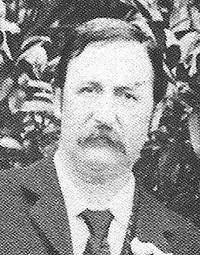
(Donald Swanson)
Donald Swanson was Chief Inspector of the CID at the time and on good terms with Anderson.
He was put in charge of the case from 1st September to 6th October 1888 by which time his friend over took the reins.
In 1987, Swanson’s grandson found Swanson’s copy of Anderson’s The Lighter Side of My Official Life and discovered something astonishing scribbled into the margin of Chapter Nine – the section dealing with Anderson’s claims cited above. They read…
“…because the suspect was also a Jew and also because his evidence would convict the suspect, and witness would be the means of murderer being hanged which he did not wish to be left on his mind…And after this identification which suspect knew, no other murder of this kind took place in London…after the suspect had been identified at the Seaside Home where he had been sent by us with difficulty in order to subject him to identification, and he knew he was identified. On suspect’s return to his brother’s house in Whitechapel he was watched by police (City CID) by day & night. In a very short time the suspect with his hands tied behind his back, he was sent to Stepney Workhouse and then to Colney Hatch and died shortly afterwards – Kosminski was the suspect – DSS” (Donald Sutherland Swanson)
Swanson, like Macnaghten, names a Kosminski though neither man gives a first name. The implication is clear. Kosminski was Jack the Ripper but they could do nothing about it as the witness, also Jewish, did not want his death on his conscience.
You can imagine the ruction this caused when they were discovered.
There are major problems with this scenario. Firstly, would the police be so easily deterred at the reluctance of anyone to convict their public enemy number one? To merely shrug their shoulders and simply make the best of a bad situation? Secondly, if the man was insane – and his incarceration at Colney Hatch asylum assumes that he was – wouldn’t it be more likely that he would be imprisoned under a diminished responsibility charge rather than hanged? If that was the case, why would the witness not offer a statement in a court of law? Surely the man, having had a good look at him as he was about to do his work, wouldn’t want to see more lives endangered?
It’s the final point which I, personally, struggle. Are we really to believe that the police had Jack the Ripper in their cells and then sent him back onto the streets? I’m reminded of the scene in Dirty Harry where the murderer, Scorpio, walks on a technicality and Callaghan follows him indiscreetly. Even if the Met watched him ‘day & night’, how would it stop the madman from attacking his own family members or escaping altogether? What if there was another victim after Mary Kelly had Kosminski had escaped? How could the police possibly justify returning him to his family and hope that his brother would sufficiently cow him when the urge to kill returned?
And what of the men who trailed him. Is it possible that every single one of them kept quiet about who they were following and why?
Then there’s this.
‘No other murder of this kind took place in London.’
Someone should tell Alice McKenzie that. Or Frances Coles.
As for the identification, if Swanson and Anderson knew about this in 1889, why wasn’t Macnaghten invited? Unless he’s writing memos to the Home Office for no reason other than to chide the tabloid press, he clearly had no idea what was going on despite being the Assistant Chief Constable at the time. Something is amiss.
So what of the witness? The key point in what became known as ‘the Swanson Marginalia’ was that the only reliable witness was, like the killer, a Jew. This immediately lets out George Hutchinson and his ‘Astrakhan man’ despite Abberline believing him to such a degree that he took him on Whitechapel walking tours. True, there were other witnesses, particularly around Berners Street, but ‘the only person who ever had a good look at him’ was Jewish. We can only speculate to this as neither Anderson nor Swanson name him. However, there are two obvious candidates.
Joseph Lawende would seem to be the favourite as he was later called in by the Yard to identify James Thomas Sadler – the arrested suspect in the Coles murder – but he said upon being interviewed that he would probably not recognise the man he saw talking to Catherine Eddowes near Mitre Square again. It therefore seems more likely that Anderson’s witness is Israel Schwartz who, as we know from the Stride murder, looked his man in the face. Schwartz seems to be a reliable witness, particularly as he admitted his cowardice in running away down Berner St when he saw what was going on. Others, especially in those days, would be tempted to build their part up or, say, invent a man to explain why they were waiting outside a prostitute’s room for 45 minutes in the rain, but Schwartz’s lack of ego makes him more reliable than most.
If Schwartz is the witness he almost certainly saw Liz Stride’s murderer. But does that necessarily mean that he saw the Ripper? I’ve never been convinced that the man who killed her was Jack for many reasons – the lack of mutilation, the different type of knife, the location and the amount of people nearby. Elizabeth Stride’s murderer seems to be more of a hit and run man rather than someone who needed to tear his victim apart, but I digress.
So, who was Kosminski? We know that he was taken to the Seaside House (a Police Convalescent Home in Brighton) for identification before a spell in the Stepney Workhouse and, ultimately Colney Hatch asylum in or around March 1889 before dying not long after, but is there any more we can learn about him?
It’s here where Ripperologists are worth their weight in gold. Step forward Martin Fido, writer and broadcaster, who researched all existing records from those areas and times. You’d think that finding a Kosminski who lived in Whitechapel and went to two specific places would be easy and candidates numerous, wouldn’t you? In fact, he only found one – an Aaron Kosminski of Greenfield St, Whitechapel. Greenfield Street is almost opposite Berners Street. This begins to look promising.
Aaron Kosminski was born in Klodawa in Poland and moved to London in 1881 or 1882 where he became a barber in Whitechapel. On 12th July 1890 he was admitted into Mile End Old Town workhouse – not Stepney – for three days and returned on 4th February 1891 before moving onto Colney Hatch where he stayed until 1894. He was then transferred to Leavesden Asylum near Abbots Langley in Hertfordshire. Rather than being affected by a violent psychosis (there is talk of him threatening his sister with a knife but the only other tale of ferocity involves him throwing a chair – hardly Ripperesque though he may have been more feeble by that stage) his illness took the form of hearing voices, of refusing food from other people – preferring to eat scraps from the ground – and refusing to wash. The records show that he was insane due to ‘self-abuse’ or, as Anderson puts it, ‘utterly unmentionable vices’ which probably means masturbation.
Does this sound like Jack the Ripper? Well, if he is the man to whom Macnaghten and Swanson refer there are, again, many issues – the main one being that of Aaron’s death. Swanson maintains that he died shortly after his transfer to Colney Hatch but Aaron did not die until 1919 at the grand old age of 53. In fact, Kosminski was still alive when Swanson wrote his marginalia.
It may also be remembered that the ‘broad-shouldered man’ Schwartz saw assaulting Elizabeth Stride shouted ‘Lipski’ at either Schwartz or the second man with the pipe. Whether it was a term of abuse or possibly the other man’s name is not known, though Abberline searched for anyone of called Lipski in the area and found none. At the risk of starting a tongue-twisteer, would a Jew shout a Jewish slur at a fellow Jew?
Aaron spoke mostly Yiddish so there is also a discrepancy there as the Ripper was able to charm his victims into yards and dark squares? I suppose it’s not impossible if they just wanted his money.
In 2014, Russell Edwards claimed to have identified Kosminski as the Ripper ‘categorically and absolutely’ through mitochondrial DNA evidence. He had bought Catherine Eddowes’ shawl at an auction and commissioned Dr Jari Louhelainen to carry out testing after he’d tracked down the descendants of both Kosminski’s sister and Eddowes. The match was reported as 99.2% and then 100%.
I’m keen not to debunk any theory as all theories are valid to some degree and Russell was good enough to answer one or two questions I had last year so will only report that there has been criticism into the result and even the provenance of the shawl itself.
As for Macnaghten’s other suspects, the M.J. Druitt refers to Montague John Druitt, who was not, as Macnaghten suggests, a doctor but a barrister from Dorset. He was also an assistant schoolmaster at the George Valentine Boarding School in Blackheath as he needed a second career to supplement his income.
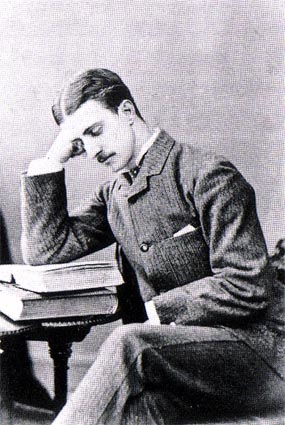
(Montague J. Druitt)
Three weeks after the Mary Kelly murder, Druitt was sacked from the school. This not only left him without a job but also accommodation though he was far from destitute. It is not known why he was dismissed though there are rumours of homosexuality (a crime at the time) or something more sinister involving the pupils. In any case, he disappeared in December 1888 – a month after the final murder.
On New Year’s Eve 1888 a waterman discovered Druitt’s body in the Thames at Chiswick. The body was weighed down with four large stones in each pocket so it seems the location was a deliberate choice rather than a case of him being washed down river. He had been in the water for roughly a month.
Among his possessions was a cheque for £50 and some £16 in gold – an extraordinary amount of cash to carry around – a first-class half-season rail ticket from Blackheath to London and a second-half return ticket from Hammersmith to London dated 1st December The gold alone was worth the equivalent of £1,500 today.
The coroner returned a verdict of suicide by drowning while in an unsound state of mind. Insanity ran in his family. His mother was institutionalised only five months earlier while his grandmother and sister committed suicide. His aunt too attempted it. It’s telling that he recorded the following in a note to his brother shortly before his death.
‘Since Friday I felt that I was going to be like mother and the best thing for me was to die’
Yes, but why would this make him Jack the Ripper? The only connection between Druitt and the murders is that he put an end to himself at the end of November following the last murder and shortly before the killing stopped. There is no positive suggestion of him being in Whitechapel at all other than that his chambers at the Inner Temple were nearby. As for his skills as a murderer it’s been said that he could have picked up some techniques from his father, William Druitt, who was a local surgeon but that is hardly damning. Macnaghten hints at ‘private information’ as well as a family rumour but it’s baffling why he should be included in the list and deemed a more realistic serial killer than Thomas Cutbush, who at least had a history of attacking women.
Druitt lived in Blackheath on the south side of the Thames where there were no overnight trains to Central London. The last train from Blackheath left at 12.25am and the first train 5.10am. Are we led to believe that Druitt killed Eddowes at 1.40am and then walked around with a kidney, uterus and apron for a while before dumping the cloth and writing on a wall? He then would have taken the unusual escape path of walking east, away from the City of London and the safety of his chambers at the Inner Temple, towards Dorset St etc.? Would he have then doubled back to wait for the first train?
Furthermore, as Philip Sugden points out, records show Druitt playing cricket in Blackheath at 11.30am on the morning of 8th September, just six hours after the discovery of Annie Chapman’s disembowelled corpse in Hanbury St. We can assume that the murderer had been awake all night and, if this is Druitt, he’d have to play a long cricket match with little sleep and, let’s not forget, Annie’s uterus somewhere back in his rooms. This just seems implausible to me.
When the Macnaghten Memorandum came to light, Lady Aberconway, his daughter, was keen to ensure that no one mentioned in it would be libelled. In fact, for a long time Druitt’s was reduced to just his initials. This leads me to reveal a bugbear I have with the field of ‘suspectology’.
One of the saddest things about Ripperology and the search for suspects is that every name which comes up does so with a slander. It seems bitterly unfair that such a sad man as Druitt, who led a tortured life, should go to the grave with only a serial killer accusation to accompany his name through history. I have similar views with another man, Sir William Gull, whose candidacy comes up as part of the Royal conspiracy. Gull was a brilliant doctor who advanced the understanding myxoedema, Bright’s disease, paraplegia and anorexia nervosa yet a Google search of his name comes up with pages of the possibility of his being a psychotic killer. It all seems a bit harsh
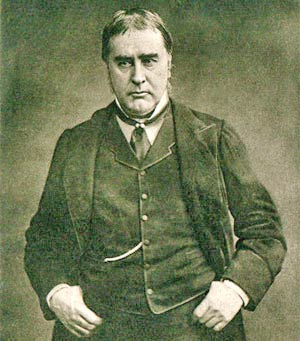
(Sir William Withey Gull)
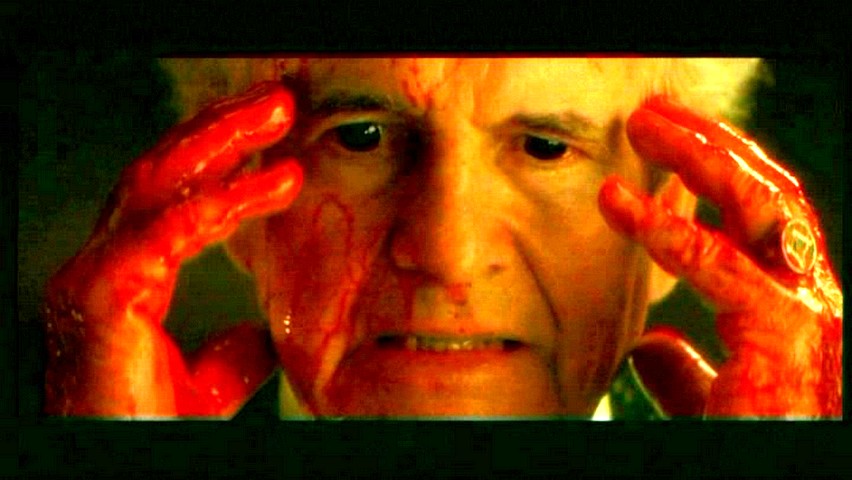
(Ian Holm as Sir William Gull from the film From Hell)
But not only did Macnaghten include Druitt in a list of possible suspects he saw him as the most likely. He wrote of Druitt, Kosminski and Ostrog.
“I enumerate the case of three men against whom the police held very reasonable suspicion. Personally, and after much careful and deliberate consideration, I am inclined to exonerate the last two, but, I have always held strong opinions regarding him, and the more I think the matter over, the stronger do these opinions become. The truth, however, will be known, and did, indeed, at one time lie at the bottom of the Thames, if my conjections (sic) be correct.”
Clearly Sir Melville’s ‘private information’ was stronger than he revealed though it sounds suspiciously like garden party tittle-tattle rather than hard evidence.
As for the final name on the list, that of Michael Ostrog, the evidence is equally weak.
Born in Russia in 1833, Ostrog’s criminal career is littered with convictions for petty theft under a litany of aliases. Despite Macnaghten’s notes the only mention of violence occurs at his arrest in 1873 when he pulled a pistol on the arresting officers. Other than that and his apparent madness his crimes seems particularly minor. In 1887 he was arrested for stealing a metal tankard and, in 1898, some books. It’s unlikely that he would become a tankard thief, then a multiple mutilating murderer and then book purloiner. Not impossible, of course, and Macnaghten and his peers may have spotted something in him but, like Druitt before him, his inclusion is inexplicable.
On 18th November 1888 Ostrog was sentenced to two years in jail for theft while in Paris. For him to be the murderer of Mary Kelly he would have to have left London immediately, committed his crime and be rushed through the courts in nine days. Questionable, I’d say.
What is striking from Magnaghten’s list is the sheer variety of suspects. We have the insane poor Jew (insane, foreign), the mad doctor (insane, foreign, possibility of anatomical knowledge) and ‘toff’ (killed himself, insanity). They ticked all the boxes between them though not individually.
In later years, Macnaghten would proudly state that he didn’t use notes and relied heavily on his memory. This may explain why he makes mistakes such as Druitt’s age (at one point he gives his age as 41 when he was a decade younger) and career and, thus, makes him an unreliable narrator of the time. Anderson and Swanson tell a frankly bizarre story though one does tend to back up the other so, though the police were under enormous pressure and scrutiny from all aspects of society, the whole thing looks a bit of a mess.
As suggested in an earlier article, the police had a thankless task in capturing the murderer. Homicides were rare even though violence, domestic or otherwise, was not and there are some cases in the Ripper file which may not have been actual murders. The deaths of Emma Elizabeth Smith and Rose Mylett could have been accidental (if Smith were hiding an abortion) while another was committed as far off as Whitehall and only included because it too was as bizarre and grotesque as the Ripper events.
The Victorian murder was generally solved by way of establishing a link between the dead and the people they knew. To this day most victims tend to have some sort of relationship with their murderer. It is therefore likely that in the case of Elizabeth Stride and Mary Kelly, their spouses with whom they’d argued would fall under immediate suspicion. Of course, the Ripper did not, as far we know, have any relationship at all with his prey which made arrest almost impossible as he worked alone and DNA evidence, even fingerprinting, was not available at the time.
So, the bobby on the beat had a tough time but their superiors seem to have posted some very strange views and this is typical as to the somewhat haywire nature of the investigation. Anderson, for all his achievements, was rather vain and many believe that the witness at the Police Convalescence Home was a fiction to cover up his inability to convict the Ripper. This would explain why nothing was made clear to Macnaghten at the time. It’s just possible that he concocted the whole story to calm the country in 1910 now that the murders were but a memory and instil confidence in both himself and the force. Maybe Swanson just wanted to back up his old friend and mentor.
However, there was a man who seems to be the perfect suspect.
On 12th December 1888 a man known as David Cohen was committed to the asylum at Colney Hatch. He was the same age as Aaron Kosminski but was, unlike him, extremely violent and psychotic. Furthermore, he died shortly after his incarceration just as Anderson claimed. Martin Fido suggests that David Cohen was a catch-all term for those whose names were difficult to pronounce or spell such as the names John and Jane Doe are used in the U.S for unidentified bodies.
Martin considers that David Cohen was really Nathan Kaminsky of Whitechapel and that a series of Chinese whispers led to Anderson and Swanson changing and normalising the name from Kaminsky to Kosminski. (This is more than possible. My own name is a bit unusual and I’ve been called everything from my actual name to ‘Mark Cowpath’ from time to time).
Nathan lived in the area and was a bootmaker – a job, incidentally, for which he would probably wear a leather apron.
What is especially suggestive is that Kaminsky had a ‘great hatred of women’ and disappeared from public record in his own name just as ‘David Cohen’ appeared.
I’ve never really been interested in the suspects but of all the theories (and there are about 150 of them) this seems to be the most plausible, though it does not make it 100% clear that he is the killer. For a start, Kaminsky spoke mostly Hebrew while witnesses (bogus or not) heard him say things like ‘You will say anything but your prayers’ or ‘You will be alright for what I have told you’ though, as always, that last one comes with an enormous George Hutchinson sized caveat. One thing is certain though – they don’t sound like the words of a raving mad man.
There is one more police suspect in the annals, though it did not come to light for many years after the murders.
In 1913 a Special Branch official called John George Littlechild, the former Head of Special Branch, wrote a letter to G.R. Sims about a police suspect. The letter came to light when it was discovered by historian and Ripperologist Stewart Evans and is reproduced here in full.
8, The Chase
Clapham Common S.W.,
23rd September 1913
Dear Sir,
I was pleased to receive your letter which I shall put away in ‘good company’ to read again, perhaps some day when old age overtakes me and when to revive memories of the past may be a solace.
Knowing the great interest you take in all matters criminal, and abnormal, I am just going to inflict one more letter on you on the ‘Ripper’ subject. Letters as a rule are only a nuisance when they call for a reply but this does not need one. I will try and be brief.
I never heard of a Dr D. in connection with the Whitechapel murders but amongst the suspects, and to my mind a very likely one, was a Dr. T. (which sounds much like D.) He was an American quack named Tumblety and was at one time a frequent visitor to London and on these occasions constantly brought under the notice of police, there being a large dossier concerning him at Scotland Yard. Although a ‘Sycopathia Sexualis’ subject he was not known as a ‘Sadist’ (which the murderer unquestionably was) but his feelings toward women were remarkable and bitter in the extreme, a fact on record. Tumblety was arrested at the time of the murders in connection with unnatural offences and charged at Marlborough Street, remanded on bail, jumped his bail, and got away to Boulogne. He shortly left Boulogne and was never heard of afterwards. It was believed he committed suicide but certain it is that from this time the ‘Ripper’ murders came to an end.
With regard to the term ‘Jack the Ripper’ it was generally believed at the Yard that Tom Bullen of the Central News was the originator, but it is probable Moore, who was his chief, was the inventor. It was a smart piece of journalistic work. No journalist of my time got such privileges from Scotland Yard as Bullen. Mr James Munro when Assistant Commissioner, and afterwards Commissioner, relied on his integrity. Poor Bullen occasionally took too much to drink, and I fail to see how he could help it knocking about so many hours and seeking favours from so many people to procure copy. One night when Bullen had taken a ‘few too many’ he got early information of the death of Prince Bismarck and instead of going to the office to report it sent a laconic telegram ‘Bloody Bismarck is dead’. On this I believe Mr Charles Moore fired him out.
It is very strange how those given to ‘Contrary sexual instinct’ and ‘degenerates’ are given to cruelty, even Wilde used to like to be punched about. It may interest you if I give you an example of this cruelty in the case of the man Harry Thaw and this is authentic as I have the boy’s statement. Thaw was staying at the Carlton Hotel and one day laid out a lot of sovereigns on his dressing table, then rang for a call boy on pretence of sending out a telegram. He made some excuse and went out of the room and left the boy there and watched through the chink of the door. The unfortunate boy was tempted and took a sovereign from the pile and Thaw returning to the room charged him with stealing. The boy confessed when Thaw asked whether he should send for the police or whether he should punish him himself. The boy scared to death consented to take his punishment from Thaw who then made him undress, strapped him to the foot of the bedstead, and thrashed him with a cane, drawing blood. He then made the boy get into a bath in which he placed a quantity of salt. It seems incredible that such a thing could take place in any hotel but it is a fact. This was in 1906.
Now pardon me — it is finished. Except that I knew Major Griffiths for many years. He probably got his information from Anderson who only ‘thought he knew’.
Faithfully yours,
J. G. Littlechild
This was an enormous find. Before we even look at Dr. T., it’s worth recording the final line.
‘Anderson, who only ‘thought he knew.’ ‘
Of course, Anderson claimed the opposite and stressed that the case was over but Littlechild doesn’t seem convinced.
(J.G. Littlechild and G.R. Sims)
John George Littlechild was not directly involved with the Ripper murders. As head of Special Branch from 1883-1893, he was largely concerned with Fenian activity in the capital city so was aware of Irish and Irish-American visitors with a history of political agitation as well as funding.
The letter was written to the journalist G.R. Sims who knew the case intimately, having reported on it at the time. It is undoubtedly a reply to a missing letter and it’s probable that ‘Dr D’ refers to Druitt, though it’s strange that the name means nothing to Littlechild.
More importantly, there was a new name and suspect in the case. Not only that, the head of Special Branch painted him as a ‘very likely suspect’.
As for Tumblety himself it’s debatable if there’s a stranger character in the entire case. Born in Ireland in or around 1833, he made a living as a ‘quack’ doctor, selling his own brand of medicines such as ‘Tumblety’s Pimple Destroyer’. A flamboyant and boisterous egotist, he made an impression everywhere he went with his loud and gaudy clothes and enormous moustache. His claims became bolder and bolder. While in Boston, one of his patients died, allegedly of his remedies, and Tumblety was fortunate to escaped prosecution.
On 5th May 1865 he was arrested for alleged complicity in the assassination of Abraham Lincoln as he knew one of John Wilkes Booth’s associates. Francis Tumblety was not a man who was afraid of publicity.
(Two depictions of Francis Tumblety)
But why would Scotland Yard consider him to be a suspect? Maybe this anecdote rang alarm bells.
He had invited a friend, Colonel Dunham over to dinner with some friends when the following occurred.
“Someone asked why he had not invited some women to his dinner. His face instantly became as black as a thunder-cloud. He had a pack of cards in his hand, but he laid them down and said, almost savagely, ‘No, Colonel, I don’t know any such cattle, and if I did I would, as your friend, sooner give you a dose of quick poison than take you into such danger.’ He then broke into a homily on the sin and folly of dissipation, fiercely denounced all women and especially fallen women.
He then invited us into his office where he illustrated his lecture so to speak. One side of this room was entirely occupied with cases, outwardly resembling wardrobes. When the doors were opened quite a museum was revealed — tiers of shelves with glass jars and cases, some round and others square, filled with all sorts of anatomical specimens. The ‘doctor’ placed on a table a dozen or more jars containing, as he said, the matrices (uteri) of every class of women. Nearly a half of one of these cases was occupied exclusively with these specimens.
Not long after this the ‘doctor’ was in my room when my Lieutenant-Colonel came in and commenced expatiating on the charms of a certain woman. In a moment, almost, the doctor was lecturing him and denouncing women. When he was asked why he hated women, he said that when quite a young man he fell desperately in love with a pretty girl, rather his senior, who promised to reciprocate his affection. After a brief courtship he married her. The honeymoon was not over when he noticed a disposition on the part of his wife to flirt with other men. He remonstrated, she kissed him, called him a dear jealous fool — and he believed her. Happening one day to pass in a cab through the worst part of the town he saw his wife and a man enter a gloomy-looking house. Then he learned that before her marriage his wife had been an inmate of that and many similar houses. Then he gave up all womankind.”
This was eerily reminiscent of Coroner Wynne Baxter comment at the Annie Chapman inquest when he spoke of an American doctor pestering pathology labs to buy uteri. Maybe, an American wasn’t buying them at all. Maybe he was taking them himself.
On 7th November 1888, Francis Tumblety was arrested for ‘gross indecency’ which usually meant a homosexual act. He was bailed for an enormous sum of £300 but chose to run from the law and went back to America via France on 24th November under the pseudonym of Frank Townsend. Scotland Yard went so far as sending Inspector Walter Andrews to New York to track him down. For their part, the New York City Police responded to press reports about him being the Ripper by stating ‘there is no proof of his complicity in the Whitechapel murders, and the crime for which he is under bond in London is not extraditable’ and Andrews returned home alone. Tumblety, not being a man to lay low, published a pamphlet called Dr Francis Tumblety – Sketch of the Life of the Gifted, Eccentric and World Famed Physician where he attacked all and sundry about his trying year.
Was he the Ripper? Well, George Hutchinson says he saw a flamboyantly dressed man talking to Mary Kelly (apologies for my ‘all roads lead to George’ approach. I’m honestly trying to ween myself off him but he’s just so damned interesting!) and there were rumours that he was Mrs Kuer’s lodger at 22 Batty Street (Briefly, she claimed that on the night of the ‘double event’ that a guest gave her a shirt to wear as he was going away for a while. It had blood on the sleeves. The story became the basis of Alfred Hitchcock’s The Lodger. Incidentally, Batty Street is the next road along from Berner Street and 22 is a few doors away from the Israel Lipski’s house at number 16.)
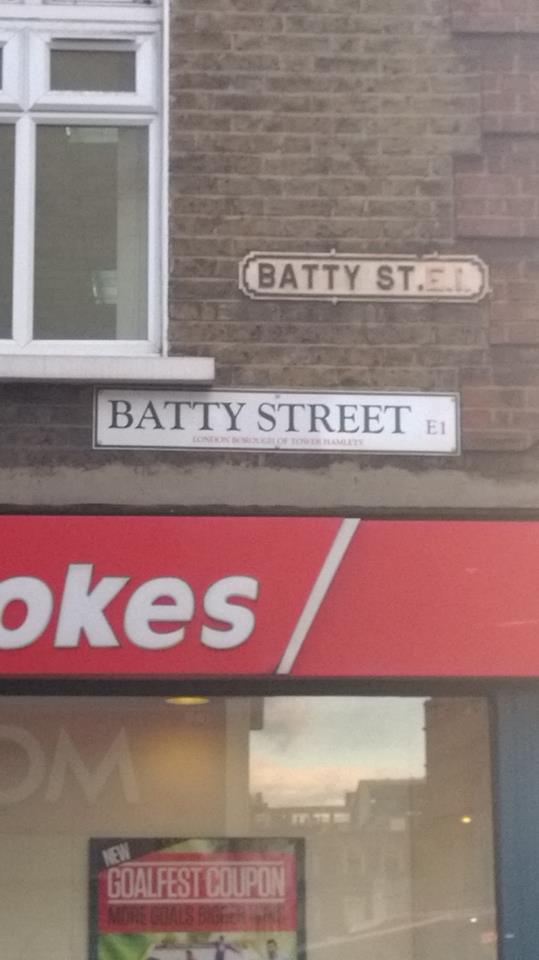
But there are also many points against him. Though his moustache was not as large in 1888 as it was to become, it would be simple to pick out such as ostentatiously dressed man among the desperate people of Whitechapel. He was also roughly 55 years old at the time and, though Mrs Long, hinted that her suspect was over 40, the majority of witnesses speak of a man between 25 and 35. Tumblety was also quite tall for the time at 5’ 10” while the witness reports tend to have him at 5’ 5”-7”. Mrs Long said he was only a little taller than his victim and Annie Chapman was only five foot tall.
As with other suspects, there is no history of violence and, again, it seems unfair to malign a man purely for his eccentricities, dress sense and sexuality.
In any case, those are the men who the police proposed as suspects or the actual Ripper himself.
As I said earlier, every argument is valid so I hope I’ve given you the facts. Ripperology does come with its own petty squabbles and arguments so, Royal conspiracy aside, I’ll try to just give you the facts, the for and against, and let you decide.
Next week I’ll look at the other suspects, some worthy of attention, some amusing (escaped gorilla) and some just downright bizarre.
A bit of housekeeping here. I’m hoping to make the 9th episode a Q & A so would welcome any questions on Twitter to either the account @jther1888 or my own which is @thecenci
Finally, I needed a bit of expert help with this week’s piece so would like to thank Jonathan Menges and Neil Bell for making sure I had the basic facts. Good men both. Thank you.
NEXT WEEK: THE CONTEMPORARY SUSPECTS



